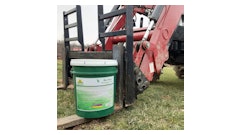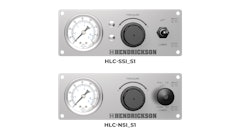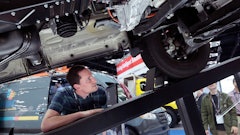
Improving overall fleet performance is often at the top of the list of priorities for construction teams. But hitting this goal is easier said than done, partly because fleet performance includes numerous factors, such as:
- Managing costs
- Spending related to upkeep, fuel, and maintenance
- Downtime and delays
- Driver behavior
To effectively boost fleet performance, managers need to implement strategies that support long-term improvements in all these aspects. Thankfully, many of these can be supported through innovative technology.
The impact telematics technology can have within the construction space is quite significant, especially on the bottom line. According to recent data from G2, 45% of teams that utilized tech integrations reported ROI (return on investment) increases due to fleet management improvements.
Here are three tech-forward approaches that can make an impact on fleet management performance and efficiency.
1. Reduce Taxable Mileage through Geofencing
One area where many fleet managers may struggle is determining how to properly document on-site miles (which are not taxable). Adopting technology to help track and calculate this mileage can help prevent overpayment and improve the bottom line.
In the past, companies have resorted to using manual logs that drivers must complete. Of course, this approach can lead to countless issues. Primarily, it is nearly impossible to determine the accuracy of these miles, especially if the company gets audited. Plus, it takes hours and hours to manually document these miles, log them into a system, and compile reports.
Electronic logging devices (ELD) automate data collection and add a level of precision that was not always possible with manual record keeping.
Geofencing is one benefit that can be derived from ELDs as this technology makes it incredibly easy to mark worksite boundaries. Sensors in work vehicles then track the distances driven within and outside of these areas for accurate mileage reports.
2. Prioritize Preventative Maintenance
Every minute counts when it comes to construction. Unfortunately, fleet delays or downtime can wind up costing thousands of dollars – and experts estimate that unplanned equipment issues account for 25-30% of project timeline setbacks.
Further, most of these holdups are often correlated directly to maintenance issues which are often easily avoided with preventative measures, such as:
- Oil changes
- Lubrication
- Tire and track inspections
- Air filtration replacements
- Tire pressure
- Spark plug testing
While it is unlikely to be completely prepared for the unexpected, routine equipment checks are highly effective at improving overall fleet performance.
The Federal Motor Carrier Safety Administration (FMCSA) requires fleet operators to complete daily vehicle inspection reports (DVIRs) to check off key inspection points. However, this manual approach to preventative maintenance is not always effective.
Of course, there is the question of the quality of the inspection. Drivers in a rush may miss warning signs that repairs are needed – or even skip the inspection entirely. DVIR checklists are also not necessarily designed to support preventative care, and therefore drivers or fleet managers must stay on top of routine part replacements or tune-ups on their own.
Digital safety checklists are a far more effective approach when making preventative maintenance a priority. They are not only easier and more streamlined for drivers, but managers can also instantly access the reports to note any abnormalities or warning signs. Telematic gateway devices help to prevent vehicle downtime and improve utilization by monitoring fault codes in real time. Alerts can automatically be sent to key stakeholders (i.e., fleet managers, maintenance technicians, and safety directors) and several reports and dashboards can be used to benchmark progress. Access to this data allows organizations to take a proactive approach to maintenance rather than a reactive one.
3. Improve Vehicle and Equipment Tracking Processes
Being able to pinpoint exactly where each trailer and driver is at any moment in time can vastly improve fleet management. This data is useful for monitoring delivery estimates, managing dispatches, and tracking mileage to estimate costs.
While most fleets are equipped with GPS devices these days, the data received from these tools is not always the most accurate. Further, if the driver is in an area with no cell service, the devices will simply stop working.
Advanced IoT telematics alleviates this issue and provides fleet managers with instant access to important data for better decision-making and can record critical information when out of coverage. These hubs connect other devices like sensors and dashcams into one platform, providing managers with the exact data they need to improve the safety and efficiency of the entire fleet with real-time tracking capabilities.
Managers can track each of their trailers to best allocate their drivers and maximize load volumes. These sensors also improve safety measures by monitoring driving speeds and providing key data in the case of an accident which may be used to exonerate drivers and reduce insurance costs.
In construction for ready-mix trucks this technology can track every pour being made. Specialized sensors can be utilized in concrete pouring fleets to monitor drum rotations, temperature, and other efficiency metrics to improve the quality of concrete. These save the company money by reducing the amount of fuel, water, and concrete waste, making the vehicles more efficient, and improving the quality of work they do for their customers.
Telematics, IoT devices, and even AI integrations have the power to significantly improve construction fleet management when utilized effectively. Plus, their advantages can even extend beyond the fleet and influence the entire organization, supporting a more efficient and tech-forward business.

























